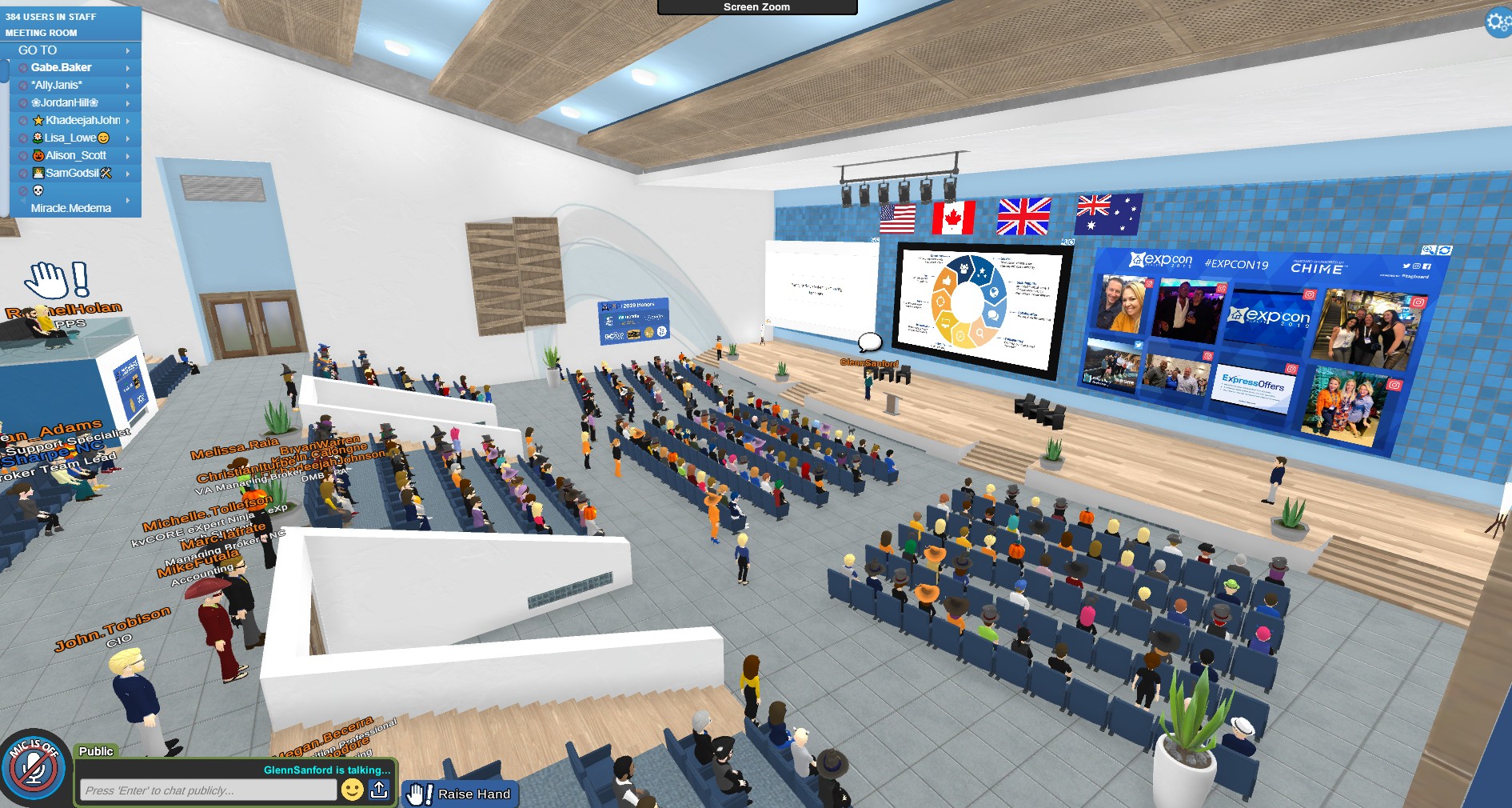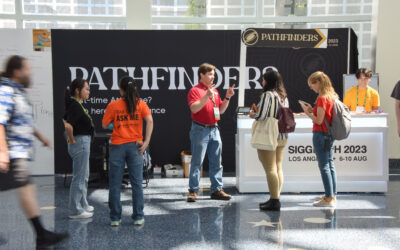“Virbela Virtual Worlds – Laval Virtual,” Image Courtesy Laval Virtual
The world is changing and we are changing with it. The COVID-19 pandemic has brought with it a reflection on and adaptation of many well-established processes. One example is the way some of our partner conferences have shifted gears. With social distancing currently underway and a necessity to overcome the situation, many conferences recently moved from face-to-face, in-person interaction to fully online and remote experiences.
With this article, the ACM SIGGRAPH External Relations Committee shares how recent partner conferences have overcome this challenge, as well as the technologies they are using to make conference education possible in order to deliver content and social interaction virtually.
Going virtual in less than a month
Our first example is the IEEE Conference on Virtual Reality and 3D User Interfaces (IEEE VR), which focuses on content that incorporates virtual reality (VR), augmented reality, and mixed reality technologies, all topics which are closely aligned to the SIGGRAPH conference as well as other ACM conferences.
Held 22–26 March, IEEE VR typically attracts more than 1,000 attendees and hundreds of papers, posters, and demonstrations. This year, it was scheduled to be held in Atlanta, Georgia in the United States. But, owing to circumstances surrounding the coronavirus, organizers needed to move it to a fully virtual event. This was an extremely brave decision, made less than a month before the event’s scheduled start.
To move the event online, three key technologies were used: Amazon Prime’s Twitch live video-streaming service, Mozilla’s Hubs web-based 3D interactive spaces, and Slido‘s interactive polling/survey platform. Paper presenters livestreamed their presentations on Twitch, and attendees could either watch on Twitch or from within a Hubs 3D conference room. Attendees used Slido post-presention to ask questions of presenters. Most attendees viewed the presentations from a web browser, but Hubs also allowed people to enter 3D conference rooms in VR, which made it possible to view VR presentations in VR.
Overall, the event was a huge success. The organizers changed the registration model, making it completely free for attendees and offering a significantly reduced rate to paper presenters. This resulted in nearly 2,000 registrations, a more than 50% jump over attendance of IEEE VR in 2019. The technology worked well, with around 400–500 people typically watching the parallel sessions through Twitch and 100 in Hubs at any one time. Twitch was perfect for slide presentations, while Hubs allowed people to still have social interaction between sessions, with features such as animated avatars and spatial-3D sound support.
There were some limitations, such as Hubs being able to support no more than 25 people in the same 3D space, meaning that multiple 3D rooms were needed to be created for each presentation. It was also impossible to recreate the live demos and social functions that are a highlight of the conference; however, the research content was presented without issue and the participants appreciated still being able to attend the event.
The online experience was so successful, actually, that there are ongoing discussions around how to make virtual attendance a regular feature of IEEE VR, even when they are able to return to a physical space. Special thanks to Mark Billinghurst (IEEE VR organizer and a member of the ACM SIGGRAPH External Relations Committee) for providing this behind-the-scenes look into IEEE VR.
Updates from other affiliates and specialized conferences
Laval Virtual
Another ACM SIGGRAPH partner conference, Laval Virtual, will also be implementing a fully online experience for attendees free of cost. The conference that usually takes place in the beautiful city of Laval, France, will now take place in a “Laval Virtual World.” From 22–24 April, the conference, awards ceremony, and business meetings will all take place virtually within this world. They will also use the space to present the contents of Recto VRso, an international art and VR festival. This is an experience that you, our SIGGRAPH community, will not want to miss. Go to the Laval Virtual website, register and download their app to join the “Laval Virtual World” later this month.
Eurographics
Eurographics, another ACM SIGGRAPH affiliate, has also made the decision to hold its conference and co-located events virtually, with the intention of retaining as much of the original conference programming as is practical. The conference is scheduled for 25–29 May and further details will be provided over the coming days as the organizers work out how to address each type of session. Keep your eyes open!
High-Performance Graphics
ACM SIGGRAPH Specialized Conference High-Performance Graphics (HPG) 2020 will take place 16–20 July and will be fully online. HPG organizers are working out the logistics and more details can be found on their website.
RealTime Conference
A new conference that was planned from the beginning to be both online and in-person was the inaugural RealTime Conference (RTC). Due to the current situation, they shifted to online only. with free registration for all attendees. The program is divided into three events, the first of which took place this week, on 6–7 April, 4 May, and 8 June. The conference is using Zoom as its software in order to allow participants to not only see the presentations but also interact with the speakers and other members of the audience.
What the future brings…
In response to the pandemic, ACM created a Presidential Task Force in March “to provide quick advice to conference organizers suddenly facing the need to move their conferences online in light of the social distancing recommendations and global restrictions on travel due to COVID-19. We [ACM] provide concrete advice for events of all size from small (< 200 attendees) to large (over 1,000 attendees). We discuss the tasks required of organizers, specific platforms that can be used and financial considerations. We collect examples of conferences that have gone virtual and lessons learned from their experiences.”
For more information about what to do if you want to move your conference online, visit the ACM website. Have another conference or virtual education opportunity you’d like to share with the ACM SIGGRAPH community? Comment below!



